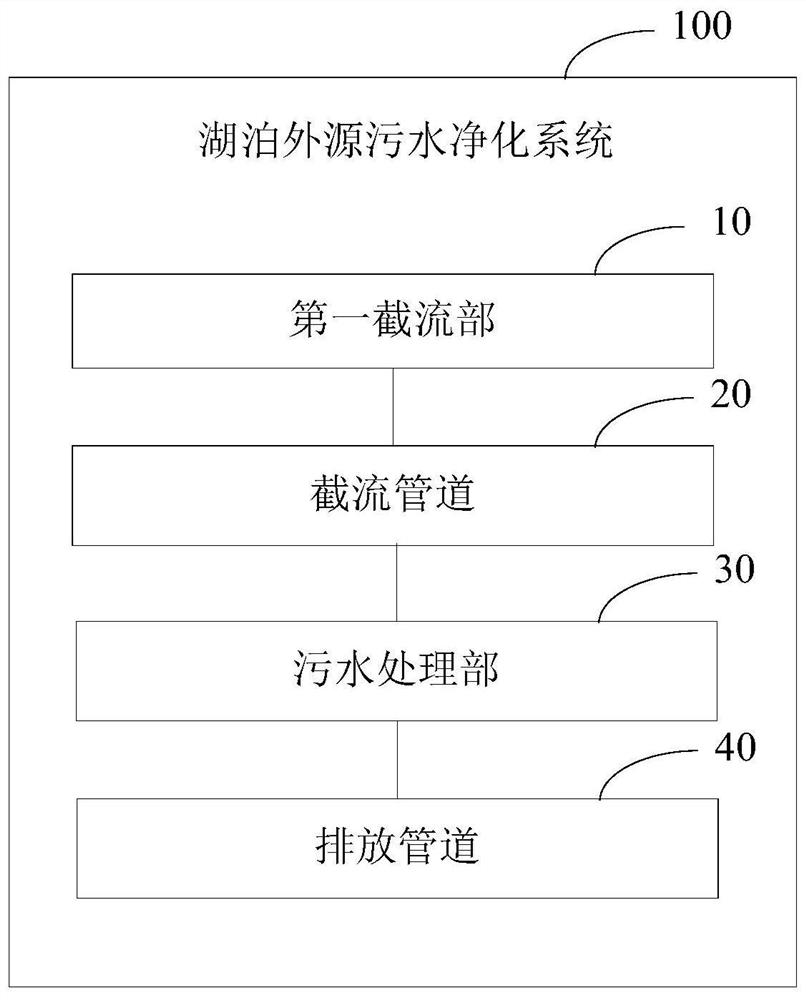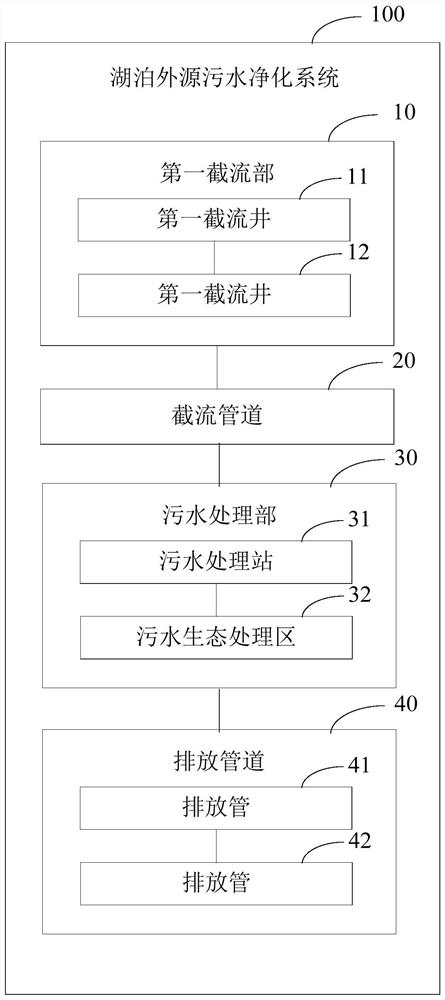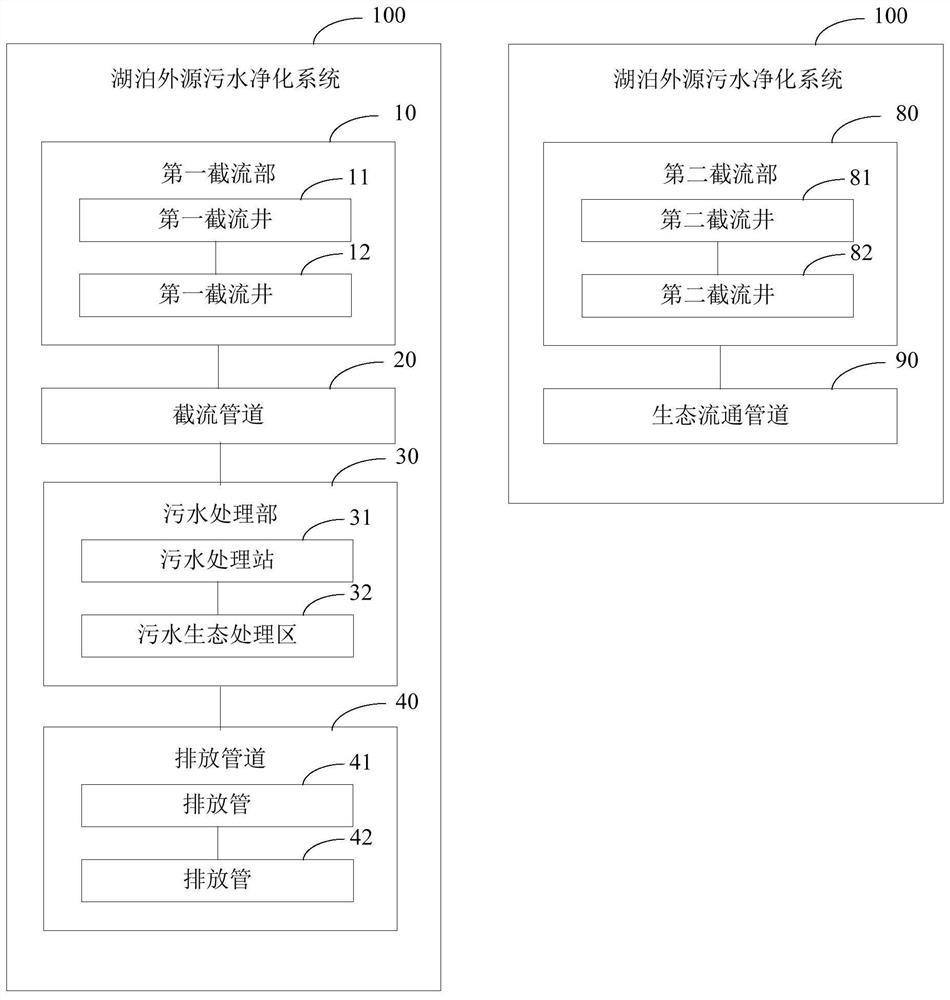Lake exogenous sewage purification system
A sewage purification and external source technology, which is applied in the field of lake external sewage purification system, can solve the problems of sewage purification, improve effectiveness and efficiency, improve water environment quality and water pollution control effect, and efficiently collect and purify Effect
- Summary
- Abstract
- Description
- Claims
- Application Information
AI Technical Summary
Problems solved by technology
Method used
Image
Examples
Embodiment Construction
[0024] Embodiments of the present application are described in detail below, examples of which are shown in the drawings, wherein the same or similar reference numerals denote the same or similar elements or elements having the same or similar functions throughout. The embodiments described below by referring to the figures are exemplary, and are intended to explain the present application, and should not be construed as limiting the present application.
[0025] The lake exogenous sewage purification system of the embodiment of the present application will be described below with reference to the accompanying drawings.
[0026] figure 1 It is a structural schematic diagram of a lake exogenous sewage purification system disclosed in an embodiment of the present application.
[0027] Such as figure 1 As shown, the lake exogenous sewage purification system 100 in this embodiment includes: a first interception unit 10 , an interception pipeline 20 , a sewage treatment unit 30 a...
PUM
 Login to View More
Login to View More Abstract
Description
Claims
Application Information
 Login to View More
Login to View More - R&D
- Intellectual Property
- Life Sciences
- Materials
- Tech Scout
- Unparalleled Data Quality
- Higher Quality Content
- 60% Fewer Hallucinations
Browse by: Latest US Patents, China's latest patents, Technical Efficacy Thesaurus, Application Domain, Technology Topic, Popular Technical Reports.
© 2025 PatSnap. All rights reserved.Legal|Privacy policy|Modern Slavery Act Transparency Statement|Sitemap|About US| Contact US: help@patsnap.com



